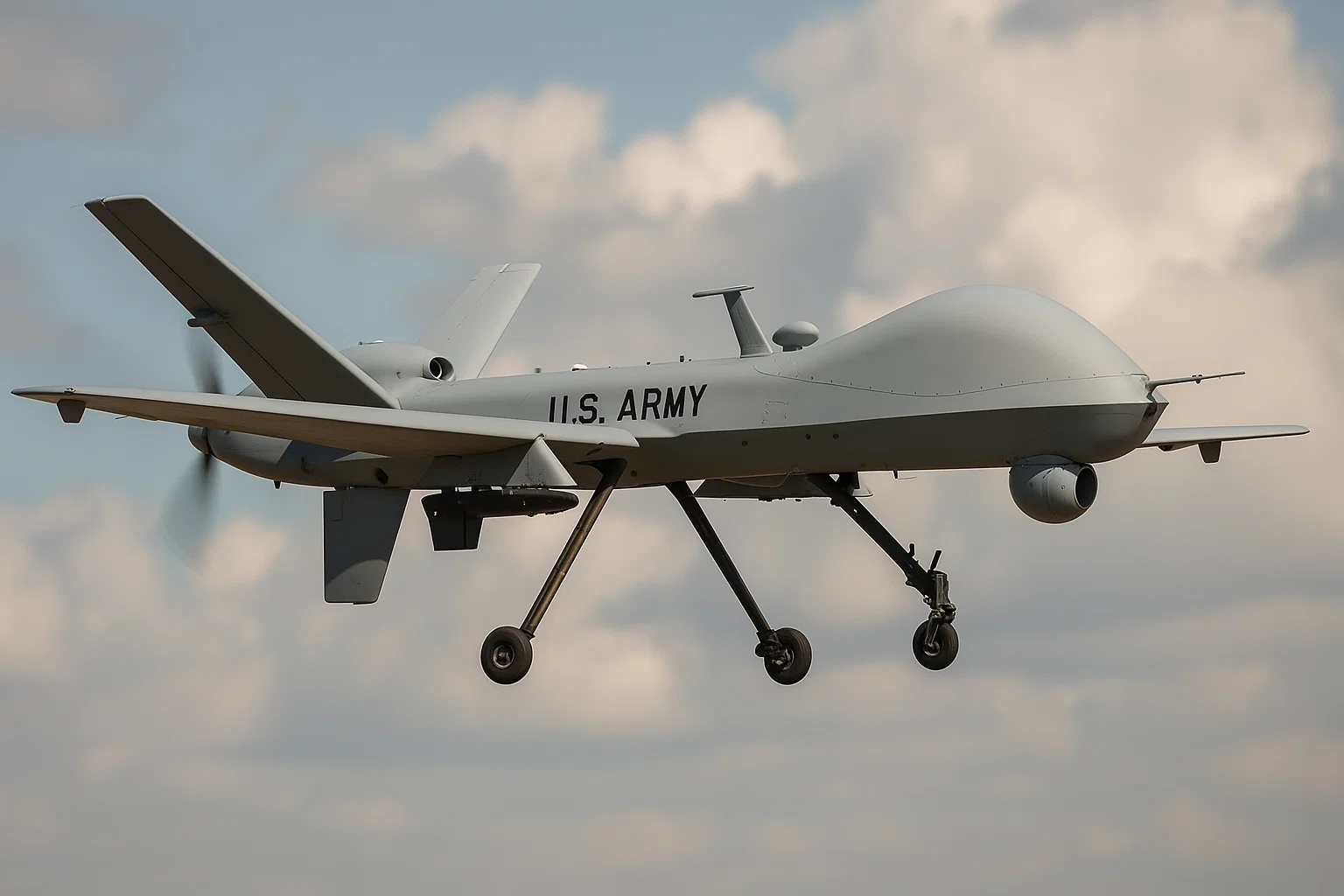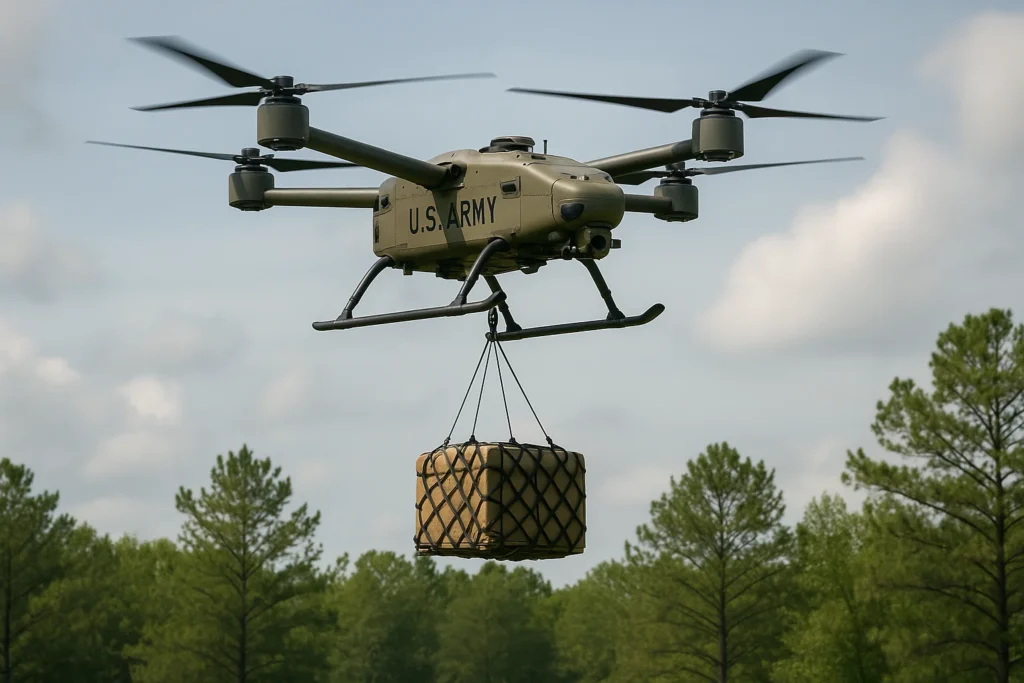Drone Warfare: The Greatest and Latest U.S. Military Dilemma

key take aways
- Institutional Inertia versus Rapid Innovation: The U.S. Department of Defense has ample resources for drone warfare but is hampered by bureaucracy and organizational culture that favor procedural perfection over quick adaptation.
- Bureaucratic Barriers to Drone Deployment: The Pentagon’s slow, risk-averse acquisition process creates procedural bottlenecks, preventing timely deployment of innovative drone technologies and battlefield adaptation.
- The CIA–Army Division in Drone Warfare: A deep institutional turf war exists, with the CIA hoarding intelligence and control, while the Army lags in integrating new tactics, hindering seamless collaboration and rapid innovation.
- Western Talent and Organizational Fragmentation: Western forces suffer from segmented personnel and limited industry engagement, unlike adversaries who rotate individuals across sectors, fostering real-time knowledge sharing and innovation.
- Cultural Shift Needed to Outpace Adversaries: To remain competitive, the Pentagon must overhaul its culture by empowering engineers and operators, reducing bureaucratic hurdles, and embracing rapid iteration, prototypes, and real-world testing.
Despite commanding unprecedented budgets and benefiting from cutting-edge technological breakthroughs, the U.S. Department of Defense continues to struggle with true adaptability in the era of drone warfare. This shortcoming is not rooted in a shortage of funding, equipment, or skilled personnel—resources and talent abound at every level of the organization. Instead, the problem lies within a self-inflicted web of bureaucracy, entrenched institutional biases, and a rigid organizational culture that resists change, slows innovation, and hampers the ability to respond quickly to rapidly evolving threats.

Bureaucracy Over Agility
The Pentagon’s acquisition process has long been infamous for being slow-moving, risk-averse, and smothered in layers of legal oversight. What should be a nimble system of rapid innovation has instead become an obstacle course of procedural bottlenecks. The development and deployment of drones—arguably the most transformative battlefield innovation since precision-guided munitions—are repeatedly hobbled by this culture. Rather than embracing rapid iteration, field testing, and constant feedback loops, promising programs often get mired in contracting disputes, intellectual-property battles, compliance audits, and interagency turf wars. The cumulative effect is a system optimized not for speed, experimentation, or victory, but for distributing blame and minimizing political risk.
On the battlefield, this institutional inertia translates into a conspicuous absence of “growing pains.” Warfighters and procurement officials are not incentivized to experiment, fail fast, and adapt on the fly—the very behaviors that startups, tech firms, and wartime industries rely on to outpace competitors. Instead, decision-makers wait for “the final solution”—the perfect platform, the flawless legal framework, the unimpeachable doctrine—before fielding new capabilities. Meanwhile, adversaries and nonstate actors surge ahead with good-enough, rapidly deployable solutions that evolve in real time, exploiting the very gaps created by America’s obsession with procedural perfection. In this environment, agility itself becomes a weapon, and the Pentagon’s reluctance to embrace it risks ceding the initiative on the modern battlefield.
The CIA–Army Disconnect
Drone warfare has also laid bare a deep institutional turf war between America’s intelligence agencies and its armed forces. Rather than working as a seamless, mutually reinforcing system, the two communities often act like competing fiefdoms, each jealously guarding its own authority, information, and procedures. In Ukraine, for instance, small teams of operators are assembling so-called “Frankenstein drones” on the fly—hybrid platforms cobbled together from commercial parts, modified software, and improvised payloads. These ad hoc solutions, born out of necessity, enable rapid adaptation to shifting battlefield conditions. By contrast, U.S. agencies remain wedded to traditional hierarchies and chains of command: the CIA continues to hoard intelligence and operational control under strict classification rules, while the Army lags behind in integrating new tactics and technologies into its formations.
This dynamic has produced what some observers have described as a culture of “engineers versus lawyers.” On one side are the engineers, operators, and innovators who want to experiment, deploy quickly, fail, and iterate. On the other are the lawyers—and by extension the risk-averse senior leaders—who feel compelled to regulate, approve, and tightly control every stage of development and deployment. In practice, this institutional clash means that novel concepts are often strangled in their infancy, long before they can be tested in combat. By the time a system clears the gauntlet of interagency approvals, adversaries and even small non-state actors may have already fielded multiple iterations, gaining valuable combat experience and refining their capabilities while the United States is still debating policy memos.
The Western Talent Problem
Adversaries like Russia, China, and Iran have embraced a more fluid model. Russian defense enterprises rotate personnel between universities, industry, and operational units, sharing knowledge up and down the production chain. This ensures that designers understand battlefield realities and operators understand the technology’s limits.
By contrast, Western systems are rigidly segmented. Officers, not enlisted soldiers, get access to industry partnerships and advanced education. According to Soldier for Life, only about 30% of U.S. Army officers serve a full career to retirement, and only 10–20% of enlisted soldiers do the same. This high attrition rate, combined with the privilege gap between officers and enlisted personnel, creates a disconnect between end-users and managers.
During my own 16 years of service, I saw only one service member directly work with corporate industry—and that was with Starbucks. (Perhaps we need more Green Beans Coffee instead.) By contrast, at the Captain’s Career Course, officers are encouraged to pursue master’s degrees and network with industry and academia. This asymmetry means frontline knowledge rarely informs procurement decisions, while officers gain credentials but not necessarily operational insights.
Gadgets Over Doctrine
All of this perpetuates a self-defeating cycle. Defense contractors roll out “next-generation” gadgets and high-priced consulting packages, the Pentagon dutifully buys them, and yet little structural change takes hold. The emphasis remains on prestige platforms and glossy PowerPoint slides rather than on adaptable, scalable tools that can survive contact with reality. Meanwhile, Russia, China, and Iran are proving that democratizing technology—cheap drones, mass-produced electronics, and relentless iteration—can outcompete more expensive but slower Western systems. Chinese sensors, Iranian engines, and Russian deployment strategies now form an ecosystem of innovation that thrives precisely because it prizes speed and improvisation over perfection.
The contrast is stark. Iran’s Shahed-136 loitering munition, for example, costs only tens of thousands of dollars and can be assembled largely from off-the-shelf components. The U.S. counterpart—a high-end loitering drone like the Switchblade 600—costs several hundred thousand dollars per unit, takes longer to field, and still faces production bottlenecks. The gap isn’t just about price tags; it’s about philosophy. One side embraces scale, improvisation, and battlefield learning, while the other clings to pristine acquisition cycles and contractor-friendly procurement rules.
Until the Pentagon reforms its culture—not just its shopping list—the United States risks being consistently out-innovated by adversaries who are willing to experiment, fail, and adapt at a tempo the current system cannot match.
Breaking the Cycle
The United States must break the “lawyer-first” mindset and put decision-making back in the hands of engineers, operators, and warfighters. That means stripping away layers of redundant oversight, loosening rigid bureaucratic restrictions, and giving enlisted personnel—not just officers—meaningful access to industry partnerships, education, and experimentation. It also means embracing the messy but indispensable “growing pains” of rapid innovation: prototypes that fail, field tests that break, and lessons learned in real time rather than on PowerPoint slides.
How do Western defense personnel differ from adversaries like Russia and China in embracing drone technology?
Western systems are highly segmented, with officers and enlisted personnel having limited interaction with industry and academia, unlike adversaries who rotate personnel across sectors to share knowledge and foster real-time innovation.
What is the nature of the disconnect between the CIA and the Army regarding drone warfare?
There is a turf war where the CIA and the Army operate like competing fiefdoms, with conflicting priorities—AGencies hoard intelligence and control, while the Army lags in integrating new tactics—hindering seamless cooperation and rapid adaptation.
How does the Pentagon’s acquisition process affect the deployment of new drone technologies?
The Pentagon’s acquisition process is slow, risk-averse, and bogged down by procedural bottlenecks, which delays the development and deployment of new drone technologies, making it difficult to adapt quickly to battlefield needs.
What are the main organizational challenges hindering the U.S. Department of Defense’s adaptability in drone warfare?
The main challenges include bureaucratic inertia, institutional biases, and a rigid organizational culture that resist change, slow innovation, and hinder rapid response to evolving threats.
Drone warfare is not merely a contest of hardware; it is a contest of culture. Without a deliberate shift from control to adaptability, the Department of Defense will continue to cede the initiative to adversaries willing to improvise, iterate, and democratize their technology—turning agility itself into a weapon.




![[Jasmine Crockett]'s face, showing a change in expression.](https://countrybrief.com/wp-content/uploads/2025/09/thumbnail-8-768x432.jpeg)

